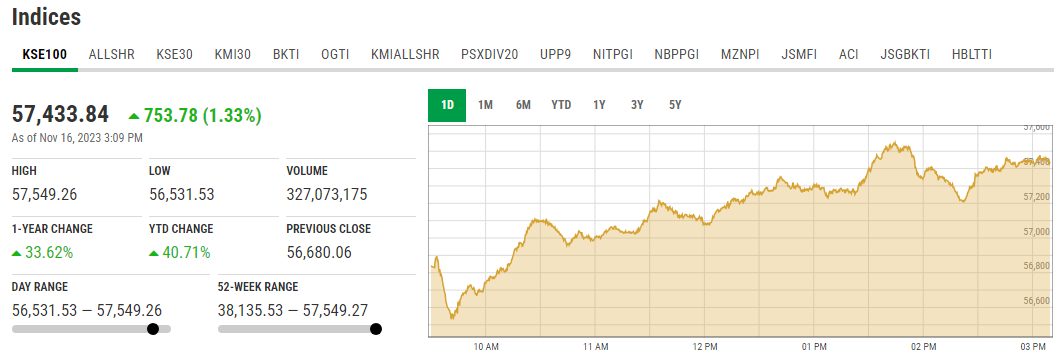Pakistan Stock Exchange’s (PSX) benchmark index and the rupee witnessed notable gains on Thursday following the government’s successful staff-level agreement with the International Monetary Fund (IMF). This agreement paves the way for Pakistan to receive $700 as part of the Stand-by Agreement.
As of 11:34 am, the KSE-100 index surged by 470.91 points, or 0.83%, reaching 57,155.14, marking an “all-time high” after surpassing the 57,000 milestone, according to Tresmark Finance. This positive momentum follows a flat day at the market, with stocks consolidating after MSCI’s decision to reduce the weight of Pakistani shares in its frontier market benchmark.
Simultaneously, the Pakistani Rupee (PKR) gained Rs2.08 against the dollar in the interbank market, reversing consecutive losses in 17 sessions. As of 12:07 pm, the rupee was recorded at Rs286.06, indicating a positive trend in the currency market.
The funds from the IMF, constituting the second tranche of the nine-month bailout package, are contingent on approval from the IMF’s executive board, bringing total disbursements under the $3 billion package, approved in July, to nearly $1.9 billion.
The IMF emphasized the need for restoring a market-determined exchange rate and highlighted potential risks from geopolitical tensions, commodity price rises, and challenging global financial conditions. The timely disbursement of committed external support remains crucial to support policy and reform efforts.
Zafar Paracha, General Secretary of the Exchange Companies Association of Pakistan (ECAP), attributed the financial market gains to the success of the IMF review. He expressed optimism for further depreciation of the dollar in the coming days, citing improvements in Pakistan’s financial credentials, including stocks, remittances, exports, and foreign direct investment. Paracha emphasized the inaccuracy of predictions regarding the decline in the rupee, labeling them as incorrect amid the positive economic indicators.




